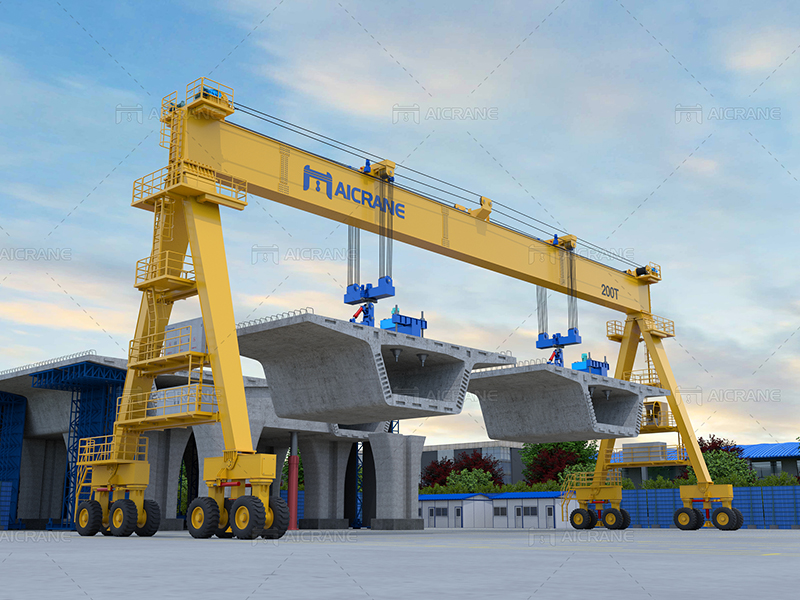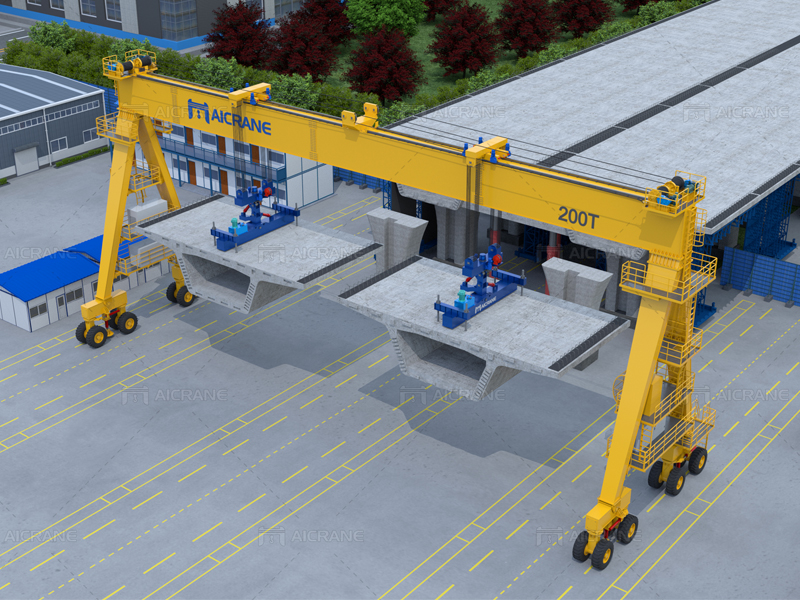The construction of bridges is a complex and challenging endeavor that demands precision, efficiency, and above all, a steadfast commitment to safety. Gantry cranes play a pivotal role in bridge construction, lifting and maneuvering heavy materials and components with precision. To ensure the well-being of workers and the success of the project, it is essential to understand and implement the key safety features of gantry cranes in the context of bridge construction.

Load Capacity Monitoring
One of the primary safety considerations in bridge construction is the weight of the materials being lifted. Gantry cranes are equipped with load capacity monitoring systems that provide real-time data on the weight being lifted. This feature ensures that the crane operator does not exceed the specified load limits, preventing overloading situations that could compromise the structural integrity of the crane for bridge construction and jeopardize the safety of the construction site.
Emergency Stop Systems
In the dynamic environment of bridge construction, unexpected situations can arise. Gantry cranes are equipped with emergency stop systems that allow operators to instantly halt all crane movements in the event of an emergency. This rapid response capability is critical for preventing accidents and ensuring the safety of workers, especially when swift action is required to avert potential hazards.
Anti-Collision Systems
In a construction site where multiple cranes may be operating simultaneously, the risk of collisions is a significant concern. Gantry cranes are often outfitted with anti-collision systems that use advanced sensors and technology to detect the presence of other cranes or obstacles in the crane’s path. These systems automatically adjust the crane’s movements or trigger warnings to prevent collisions, mitigating the risk of accidents and injuries on the construction site.
Limit Switches for Travel and Lifting
Gantry cranes are equipped with limit switches that define the safe operating range of the crane’s movements. These switches can be set to restrict the crane’s travel to specific areas and prevent it from going beyond predefined limits. Limit switches for lifting operations similarly ensure that the load is lifted or lowered within safe parameters, avoiding potential accidents caused by overextension or inadequate lifting heights.
Outrigger Monitoring Systems
For gantry cranes with outriggers used in bridge construction, outrigger monitoring systems are crucial for maintaining stability. These systems provide real-time feedback on the position and stability of outriggers, ensuring that the crane remains balanced and secure during lifting operations. Proper outrigger deployment is essential for preventing tip-overs, a serious hazard that can result in catastrophic accidents.

Weather Monitoring and Wind Speed Sensors
Bridge construction projects often expose gantry cranes to varying weather conditions. High winds, in particular, can pose a significant risk to crane operations. Gantry cranes are equipped with weather monitoring systems and wind speed sensors that automatically assess environmental conditions. If wind speeds exceed safe limits, these systems trigger alarms or even halt crane operations, preventing potential accidents due to adverse weather conditions.
Overhead Warning Systems
In environments with limited overhead clearance, cranes for construction are equipped with overhead warning systems. These systems use sensors to detect obstacles or structures that may interfere with the crane’s movement. When a potential collision is detected, the crane operator is alerted, allowing them to take corrective action to avoid accidents and damage to the crane or surrounding structures.
Load Sway Control
Load sway, caused by the pendulum motion of a suspended load, is a common challenge in crane operations. Gantry cranes often feature load sway control systems that use advanced technology, such as sway dampening algorithms or pendulum motion sensors, to minimize load sway during lifting and positioning. This not only enhances operational efficiency but also reduces the risk of accidents caused by uncontrolled load movement.
Camera Systems and Operator Visibility
Enhancing operator visibility is essential for safe crane operations. Gantry cranes are equipped with camera systems that provide operators with clear views of the load, the surrounding environment, and blind spots. This increased visibility helps operators make informed decisions, especially when navigating through complex construction sites with limited lines of sight.
Regular Inspection and Maintenance Protocols
Beyond specific safety features, a comprehensive safety approach for gantry cranes in bridge construction includes regular inspection and maintenance protocols. Routine inspections ensure that all safety systems are functioning correctly, and any potential issues are identified and addressed promptly. Preventive maintenance is key to avoiding unexpected malfunctions that could compromise the safety of crane operations.
Conclusion
Safety is paramount in bridge construction, and gantry cranes are pivotal tools that, when equipped with the right safety features, contribute significantly to accident prevention and worker well-being. Load capacity monitoring, emergency stop systems, anti-collision technology, limit switches, outrigger monitoring, weather monitoring, overhead warning systems, load sway control, camera systems, and diligent inspection and maintenance protocols collectively form a robust safety framework for gantry cranes in bridge construction.
By prioritizing safety features and implementing best practices, construction teams can harness the full potential of gantry cranes while minimizing risks and ensuring the successful and secure completion of bridge projects. In the dynamic and challenging environment of bridge construction, the integration of advanced safety features in gantry cranes is not just a regulatory requirement but a fundamental commitment to the protection of human lives and the longevity of critical infrastructure. To learn more, visit https://steelmillcranes.com/